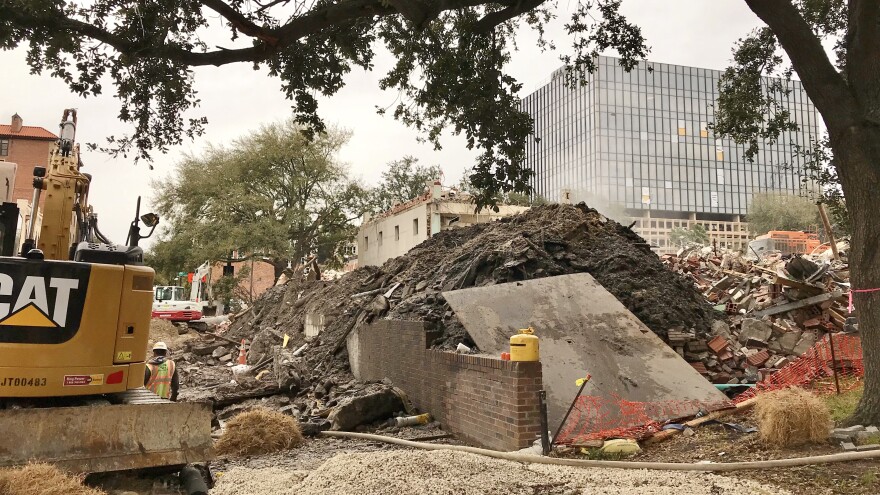If you’ve driven down Bay Street in downtown Jacksonville recently, chances are you’ve seen bulldozers removing the remains of the old City Hall Annex.
It, and the old courthouse, are being removed at a cost of $8 million.
But what city planners like Ennis Davis see is an assault on midcentury architecture that’s bad for a vibrant downtown.
He shared his heartbreak with WJCT News Director Jessica Palombo in this Valentine’s Day edition of The Jaxson on WJCT.
Piles of rubble where city buildings used to be is history repeating itself, Davis said.
In the 1970s, the buildings of Henry J. Klutho — now revered as a great Prairie School architect — were regarded as outdated, and several of his buildings were knocked down to make way for the midcentury buildings that are now being knocked down because they’re considered outdated.
The Bay street structures, the recently demolished Greyhound station, and their structurally sound ilk should be considered for adaptive reuse, Davis said, rather than razed to create “dead blocks,” or vibrancy-killing areas devoid of “street-level human-scale interaction.” That’s city planner speak for places like parking lots that offer nothing for pedestrians.
“When you have an existing building, you have an opportunity for that building to be the subsidy itself,” he said.
A midcentury building in downtown Orlando was recently converted into a “hip” Aloft hotel that’s uniquely Orlando, he pointed out.
And with the constantly stated desire to draw more residents to downtown, city officials should give up more public buildings — without offering tax breaks, Davis said.
“If the city has a particular vision of what it wants downtown to be — if it wants it to be vibrant and walkable, the easiest thing it could do is RFP (request proposals) and release that property to be put back on the marketplace. That doesn’t necessarily mean the taxpayer has to subsidize the demolition of a building on it. Let the market decide what needs to happen there and let the market pay for it,” he said.




